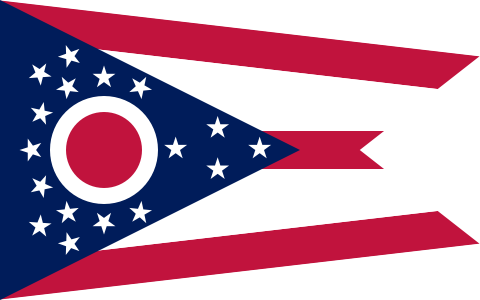Ohio voters will decide on two statewide ballot measures on Nov. 7, 2023. Along with Issue 2, which would legalize recreational marijuana for adults over 21, voters will also decide on Issue 1, which would create the state constitutional right to abortion and other reproductive matters.
Issue 1 is a constitutional amendment, which would add a new section to Article 1 of the Ohio Constitution. The amendment, titled the Right to Reproductive Freedom with Protections for Health and Safety, would provide for the right to “make and carry out one’s own reproductive decisions,” including but not limited to abortion, contraception, fertility treatment, miscarriage care, and continuing pregnancy. The amendment would also allow the state to restrict abortion after fetal viability, except when “necessary to protect the pregnant patient’s life or health.” Issue 1 would define fetal viability as “the point in a pregnancy when, in the professional judgment of the pregnant patient’s treating physician, the fetus has a significant likelihood of survival outside the uterus with reasonable measures.”
In Ohio, abortion is currently legal for up to 21 weeks and six days of pregnancy. In 2019, Senate Bill 23, also called the Human Rights and Heartbeat Protection Act, was signed into law by Gov. Mike DeWine (R). SB 23 was designed to ban abortion when the “unborn human individual the pregnant woman is carrying has a detectable fetal heartbeat,” with exceptions for medical emergencies of the pregnant woman. However, SB 23 was enjoined after the ACLU and other organizations filed a lawsuit against the bill in the Ohio Supreme Court. The lawsuit is still ongoing.
Grace Panetta, a reporter from The 19th News said, “If Issue 1 passes, abortion and other forms of reproductive health care will be protected in the state constitution … If Issue 1 fails, the courts will most likely decide the fate of abortion access in Ohio.”
After the Dobbs v. Jackson Women’s Health Organization Supreme Court decision in 2022, there were six ballot measures that year addressing abortion—the most on record for a single year. Measures to establish state constitutional rights to abortion were approved in California, Michigan, and Vermont.
Both supporters and opponents of Ohio Issue 1 have said the results could affect future ballot measures in other states. Dr. Lauren Beene, executive director of Ohio Physicians for Reproductive Rights, said, “There are so many states that are planning on doing this next year too and we need to show them that Ohio, as a bellwether of the country, is a pro-choice state. And in Ohio, we the people make decisions about our own healthcare and not the government.” Peter Range, executive director of Ohio Right to Life, said, “I don’t know what will happen concerning how this vote in Ohio impacts things, but I do know Ohio is an important state. It’s an important electorate, and a win here would show those other states that will have these ballot measures in the years to come, ‘Hey, these battles can be won.’”
There are three political action committees (PACs) supporting Issue 1—Ohioans for Reproductive Freedom, Ohio Physicians for Reproductive Rights, and Ohioans United for Reproductive Rights. Together, the PACs raised $10.6 million through July 31, 2023.
The PAC opposing Issue 1, Protect Women Ohio, raised $16.4 million in cash and in-kind contributions. Protect Women Ohio also spent funds to support a constitutional amendment, also titled Issue 1, that was on the ballot for August 8, 2023. Because Protect Women Ohio was involved in the election on Aug. 8, the PAC had more recent campaign finance reports, which covered through Sept. 8, 2023.
The next campaign finance deadline for support and opposition PACs is Oct. 26, 2023.
The Ohio Democratic Party, ACLU of Ohio, Planned Parenthood Advocates of Ohio, and Ohio Women’s Alliance support Issue 1. Lauren Blauvelt, chairperson of Ohioans for Reproductive Freedom, said, “The people of Ohio overwhelmingly support abortion access and keeping the government out of our personal lives. This citizen-led amendment will do just that: through our deep community partnerships and long history of protecting reproductive freedom and providing access to healthcare, this campaign puts the power back in the hands of the people of Ohio, so everyone has the freedom to prevent, continue, or end a pregnancy should they decide.”
The Ohio Republican Party, Ohio Right to Life, Center for Christian Values, and Right to Life Action Coalition of Ohio oppose Issue 1. The Protect Women Ohio PAC said, “Using the label ‘reproductive freedom,’ the abortion industry wants to bring taxpayer funded abortion at any time during pregnancy, including beyond the point at which an unborn baby can feel pain, to Ohio. Their proposal would outlaw protections for the most vulnerable and would eliminate basic health and safety regulations in place to protect women.”
Ohio Issue 1 needs a simple majority of votes to pass. In August, voters rejected another Issue 1, which would have required a 60% vote for the amendment to pass.
Additional reading


